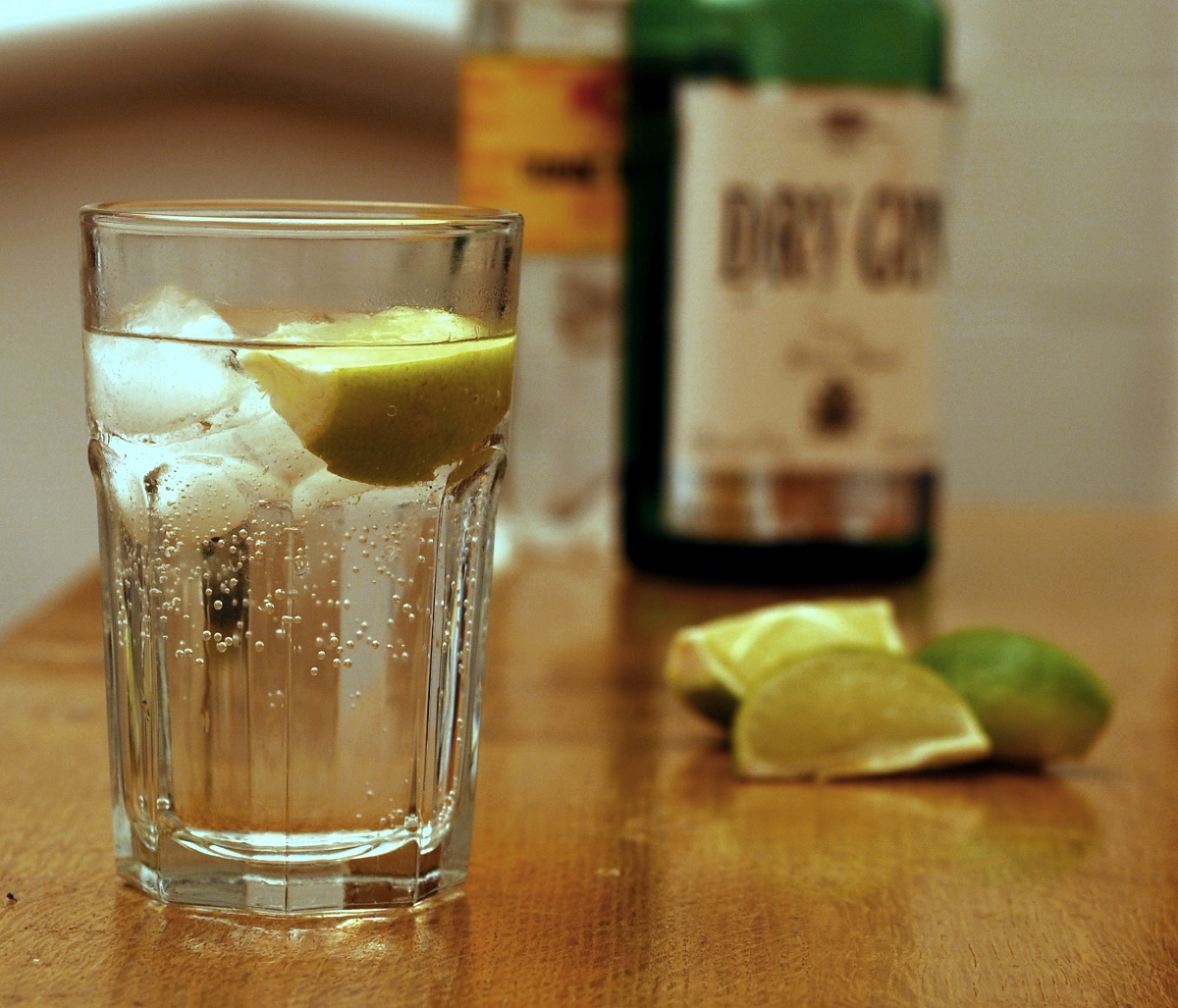How to make gin and tonic in a way that elevates it from a mere drink to an experience. Discover its rich history, perfect proportions, garnishes, and more to ensure your gin and tonic stands out at any event
Gin and Tonic History
The gin and tonic origin traces back to colonial times. Originally, the drink began its journey as a medicinal remedy. British soldiers in India started drinking tonic water, rich in quinine, to fend off malaria. However, the bitter taste of quinine wasn’t to everyone’s liking. To make it more palatable, they began mixing it with gin, sugar, and water. The gin and tonic history is, thus, as fascinating as it is functional
Calorie Conscious: The Dietary Side of Gin and Tonic
Now lets talk about the calories in a gin and tonic serving. To strike a balance between enjoying a delightful drink and maintaining our health, understanding the calorie count is essential.
For a standard serving size of 75ml, the total calories in gin and tonic can range from 50 to 75 calories. However, this count isn’t evenly split between the two primary components. Here’s a closer look:
- Gin: The caloric culprit in our drink, gin contributes the lion’s share of the gin and tonic calories. On average, gin contains about 97 calories for a 1.5-ounce (44 ml) serving. So, if you’re pouring more gin into your glass, remember that the calories add up.
- Tonic: Contrary to what some might believe, tonic isn’t calorie-free. In fact, the calories in this cocktail significantly rise due to the sugars in tonic water. A standard serving of tonic can bring in anywhere from 30 to 90 calories, depending on the brand and the sugar content.
Is Gin and Tonic Fattening?
The answer lies in moderation. While a gin and tonic isn’t overly calorie-dense, if you frequently indulge in multiple servings, those calories can accumulate, potentially impacting your dietary goals.
The Ideal Gin to Tonic Ratio
The general consensus recommends a ratio of 1:2, meaning one part gin to two parts tonic. So, for a standard glass, you might use 50ml of gin topped up with 100ml of tonic
How To Make Gin and Tonic (Step-by-Step)
Prep: 2 mins
Cook: 0 mins
Total: 2 mins
Serving: 1 serving
Ingredients
- Gin: 1 part (25ml)
- Tonic water: 2 parts (50ml)
- Garnish options: Lemon or lime slice, sprig of rosemary, cucumber slice
- Ice cubes
Method
- Select Quality Ingredients: Begin with a high-quality gin and tonic. A premium gin can truly uplift the drink’s flavor.
- Pour the Gin: Add 50ml of gin to your glass.
- Introduce the Tonic: Following the classic 1:2 ratio, pour 100ml of tonic water into the glass.
- Blend Gently: Use the Interplay stirrer to mix the ingredients gently, preserving the tonic’s fizz.
- Monitor the Alcohol Level: Keep in mind the alcohol content. Typically, a gin and tonic cocktail will have an alcohol content ranging from 7-10%, varying with the gin and tonic brands.
- Adorn Your Cocktail: Personalize with your chosen garnish—be it a citrus slice, a rosemary sprig, or a cucumber piece—for added flavor and aesthetic appeal.
- Serve Chilled: Present your gin and tonic over ice and savor the refreshing.
The Art of Gin and Tonic Garnish
The choice of your gin and tonic garnish can add much to your experience.
- Classic Citrus: A slice of lemon or lime is perhaps the most traditional gin and tonic garnish. This citrusy addition provides a zesty kick that complements the botanicals in the gin.
- Cucumber Cool: For those who prefer a more refreshing and mellow taste, a thin slice of cucumber can be the ideal garnish.
- Herbaceous Rosemary: A sprig of rosemary can provide an unexpected yet delightful twist to your gin and tonic. Plus, it looks incredibly sophisticated!
- Spiced with Pink Peppercorns: If you’re feeling a bit adventurous, a few pink peppercorns can bring a slightly spicy and fruity note to your drink.
- Fruity Additions: Think of juniper berries, grapefruit slices, or even a twist of orange peel. These fruity garnishes can provide additional layers of flavor and complexity to your gin and tonic.
Your gin and tonic garnish choice can make a huge difference. It not only personalizes your drink but also transforms it from a regular beverage to an artisanal experience.
What Determines the Average Price of Gin and Tonic?
The cost of a gin and tonic can vary greatly based on the type of gin, the brand of tonic, the location of the bar, and many other factors. However, here’s a general idea of the cost:
At a bar or pub in the UK
- Standard Gin (e.g., Gordon’s): A gin and tonic with a basic gin brand can cost anywhere from £4.50 to £7.00.
- Premium Gin (e.g., Hendrick’s, Tanqueray, Bombay Sapphire): For more premium gins, you could be looking at £6.00 to £12.00 or more per drink, depending on the bar and location.
At home
- Standard Gin: A 70cl bottle of a standard gin brand can range from £13.00 to £20.00. Considering a standard serving is about 50ml, this equates to roughly £0.93 to £1.43 per serving.
- Tonic: A standard 200ml bottle or can of tonic can cost anywhere from £0.50 to £1.50, depending on the brand and whether it’s a premium tonic.
- Combined Cost: This means a homemade gin and tonic using standard ingredients can cost roughly £1.43 to £2.93.
Gin and Tonic Alcohol Content
- Gin’s Alcohol Percentage: Typically, the alcohol content in gin ranges from 37.5% to 50%, depending on the brand and variety. This means that in a standard serving, the actual alcohol volume from gin alone can be quite significant.
- Tonic’s Contribution: While tonic water primarily acts as a diluent and flavor enhancer, it’s essential to note that it doesn’t contribute to the gin and tonic alcohol content. Its role is more about balancing the gin’s strong flavor.
- Standard Serving Size: Generally, a standard serving of gin in a gin and tonic is about 50ml. When mixed with tonic, the total volume of the drink increases, but the actual alcohol content remains the same. Hence, the potency of the drink depends on the ratio of gin to tonic.
- The Impact on Intoxication: Recognizing the gin and tonic alcohol content is vital for responsible drinking. While it might seem like a light and refreshing beverage, its alcohol content is on par with other spirits. It’s always best to drink in moderation and be aware of your limits.
- Comparison with Other Drinks: When you compare a gin and tonic to other cocktails or alcoholic beverages, it stands as a moderately strong drink, mainly due to the high alcohol content of gin.
The gin and tonic alcohol percentage must be optimum to ensure that this cocktail isn’t just about taste, but also carries a punch. It’s essential to be aware of its potency, especially if you’re planning to have more than one or if you’re new to the world of cocktails. Drink responsibly and savor the balanced blend of flavors and the kick that the gin and tonic offers.


